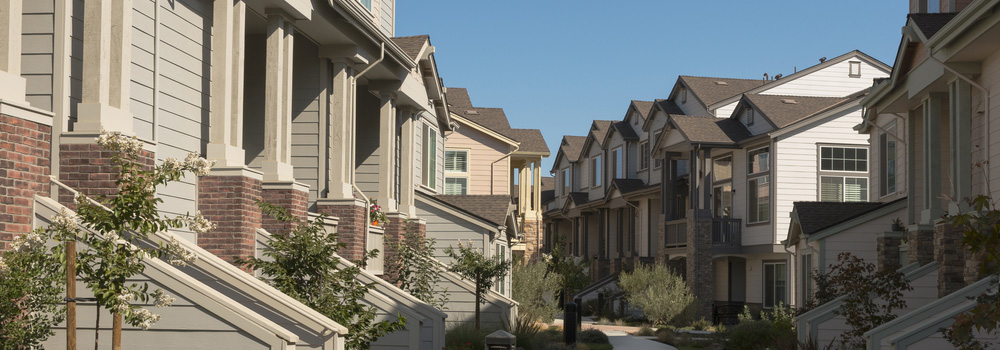From: https://www.multifamilyexecutive.com
By Lauren Shanesy
June 22, 2016
The rental market continues to drive housing’s recovery—36% of U.S. households opted to rent in 2015, the largest share since the 1960s.
Posting the largest 10-year gain on record, the number of renters increased by 9 million over the past decade, according to the annual State of the Nation’s Housing 2016 report released today from the Joint Center for Housing Studies of Harvard University.
Last year marked the largest single-year increase in renter households in Housing Vacancy Surveys (HVS) records dating back to the mid-1960s, up 1.4 million. The surge in rentership has caused the multifamily construction sector to boom—mostly in high density areas—hitting a 27-year high for starts at 397,300, an 11.8% increase from 2015. Vacancy rates have also fallen steadily since 2010, dropping to just 7.1% by 2015—its lowest point since 1985.
Demand has pushed rent prices to new highs, putting units in reach of only the upper end of the renter segment and renter-by-choice households. Renter households earning $100,000 or more have been the fastest growing segment over the past three years, but a typical renter earns only $35,000 per year and more than a third of renter households earn less than $25,000 annually. But, median asking rent for a newly constructed market-rate unit built in 2015 was $1,381 per month, which is 70% higher than the median rent for all multifamily units. Overall, rents grew by 3.6% in 2015 according to Consumer Price Index.
Affordability remains one of the largest issues highlighted in the current rental market. The number of cost-burdened renter households rose by 3.6 million to 21.3 million from 2008 to 2014, and the number of households paying more than 50% of income for housing jumped by 2.1 million to a record 11.4 million.
The strength of the rental market is paralleled by a persistent weakness in homeownership. While the multifamily market sees a surge in construction starts, new home construction was still near historic lows last year with only 1.1 million units.
The national homeownership rate continues to fall, and dropped more than 5 percentage points from the 69% peak in 2004 to just 63.7% in 2015.
Mortgage conditions are still tight, and student debt continues to burden young renters and hinder them from making down payments on homes, keeping them barred from potential ownership.
The share of all US households with outstanding student loan debt increased from 12% in 2001 to 20% in 2013, including 39% of households aged 20-39, according to the Survey of Consumer Finances. This has also kept the share of millennials (born 1985–2004) living with their parents high, having risen from 17% in 2008 to about 22% in 2014. The share is only expected to increase.
But though homeownership rates are on a 10-year downward trend, the idea isn’t totally off renters’ radar.
Most Americans are still keen on the idea of homeownership, and most young renters believe that ownership is not only a good investment, but an attainable one as well. According to a 2015 Demand Institute Survey, 78% of household heads agreed or strongly agreed with the statement “I think homeownership is an excellent investment,” while only 6% disagreed or strongly disagreed.
The same survey found that 83% of household heads expected to own homes in the future, and 85% of renters under age 30 and 69% of renters aged 30–39 expect to become homeowners.
As the economy improves, incomes increase, and credit standards loosen, younger households could transition into homeownership.
Over the next 10 years, the millennial generation is expected to form 2 million households per year, increasing the total number of millennial-headed households from 16 million in 2015 to a projected 40 million in 2025. Close behind are the projections for new housing construction, which should average 1.6 million units per year over the next decade.
The rental market should remain robust over the next decade as these millennials begin to form households, households ages 30-40 remain in multifamily, and baby boomers downsize into apartments.
Here are some other notable findings from the report:
- Residential permits increased in 70 of the 100 largest metro areas in 2015, with yearly gains of over 25% in metros including Dallas, Los Angeles, Miami, New York, San Diego, and San Francisco.
- There were slowdowns in Houston, San Antonio, San Jose, and Washington, D.C.
- In 18 of the nation’s 25 largest markets, annual rent increases in the middle tier (Class B) outstripped those in the upper tier (Class A).
- The median size of multifamily units fell from nearly 1,200 square feet at the 2007 peak to 1,074 square feet in 2015.
- More than half of units completed in 2014 were either studios or one-bedroom apartments—the largest share in history, and well above the 36% average share in the 1990s and early 2000s. Only 7% of apartments added in 2014 had three or more bedrooms, down from about 13% in earlier periods.
- Metrostudy data show that the supply of construction-ready land (vacant developed lots) in 50 metro areas shrank by 30% from 2008 to 2013, before settling just above levels posted in the early 2000s.
- Minorities and foreign-born households account for half of renter households, compared with just one in four homeowners.
- Families with children now make up 31% of renters, but only 27% of homeowners.
To read full article visit: https://www.multifamilyexecutive.com/property-management/rent-trends/do-not-publish-multifamily-rentals-continue-to-drive-housing-market_o
For more information on 1031 DST and 1031 TIC Exchanges and Investments contact Corcapa 1031 Advisors (949) 722-1031 or complete the contact form below.
"*" indicates required fields



